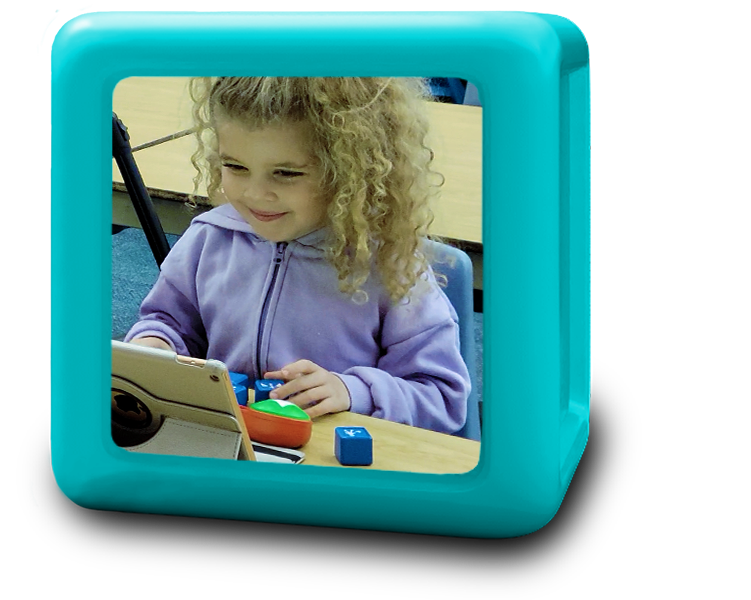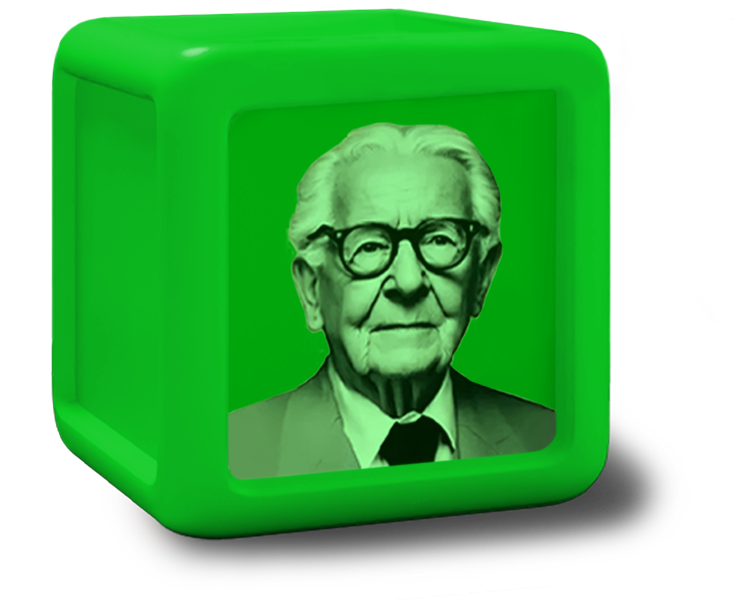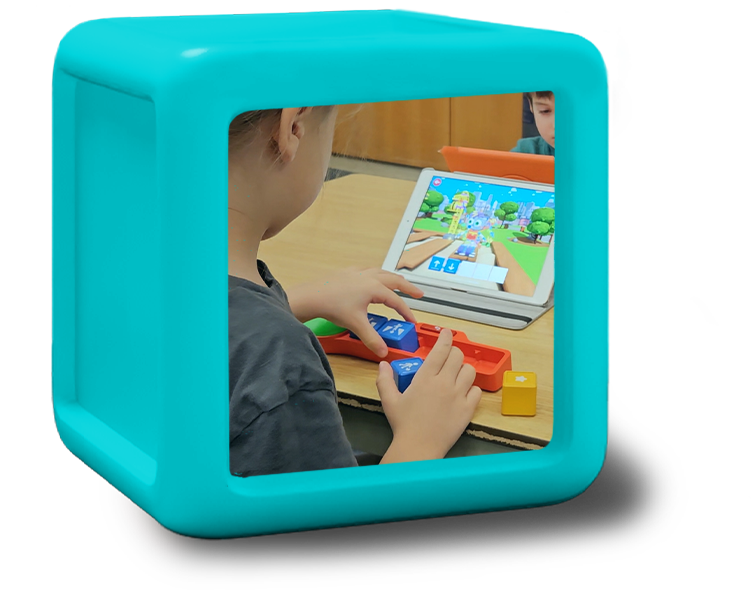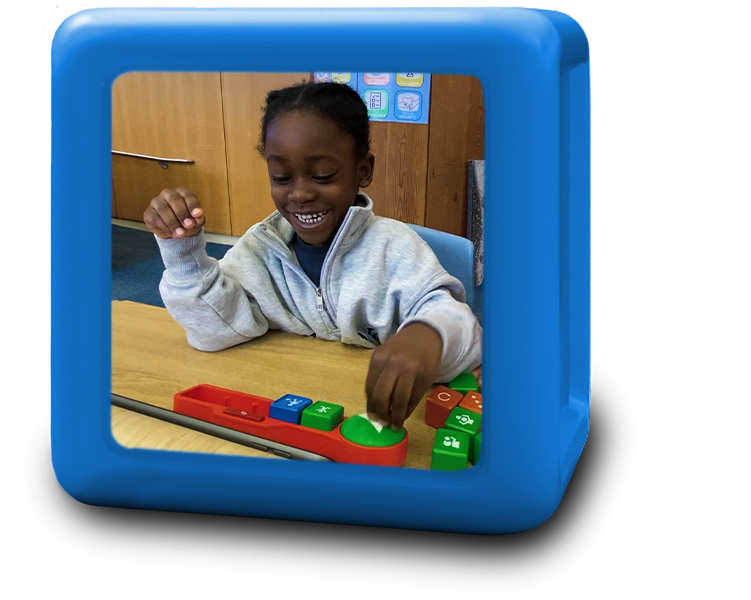The Pedagogy of Coding
Tangible Coding Tools
The advent of digital literacy and the rise of computational thinking as essential skills for the 21st century underscore the importance of introducing coding concepts in early childhood education. Research indicates that introducing coding through tangible, hands-on tools aligns well with foundational theories of child development and learning.
This review synthesizes key insights from Piaget, Froebel, Vygotsky, and contemporary research on tangible interfaces to demonstrate the efficacy of using physical coding blocks, such as Codie Blocks, to foster early computational thinking and coding skills in young children.


Theory of Cognitive Development
Piaget’s theory of cognitive development posits that children learn best through active exploration and hands-on experiences, especially in the preoperational (ages 2–7) and concrete operational (ages 7–11) stages (Piaget, 1952). During these stages, children are developing symbolic thinking, which allows them to understand abstract concepts in a concrete way.
Piaget’s constructivist approach suggests that children "construct" knowledge by interacting with their environment and manipulating objects. Coding blocks capitalize on this principle by enabling young children to physically arrange blocks that represent different coding commands.
This hands-on manipulation is crucial for building the logical thinking patterns and problem-solving skills required in coding, making it a developmentally appropriate method to introduce coding to young learners.
Play-Based Learning
Froebel, known as the "father of kindergarten," emphasized the importance of play as a primary mode of learning for young children. Froebel's educational philosophy centered on the idea that learning should be hands-on and interactive, fostering creativity and critical thinking (Froebel, 1887).
Coding blocks, in essence, are educational toys that align with Froebel’s principles by promoting open-ended exploration and self-directed learning. By arranging the blocks in various sequences, children learn to experiment with different solutions, echoing Froebel’s belief in the value of guided, playful exploration for cognitive development.
This type of play is especially effective for young children, as it allows them to develop complex reasoning skills while engaging in fun, imaginative activities.


Social Constructivism and Zone of Proximal Development
Vygotsky’s theory of social constructivism emphasizes the role of social interaction in cognitive development, highlighting the "Zone of Proximal Development" (ZPD) as the range between what a child can do independently and what they can achieve with guidance (Vygotsky, 1978).
Tangible coding tools like Codie Blocks provide an opportunity for children to work together or with adults to solve problems, fostering collaborative learning and peer support. Educators and caregivers can act as "scaffolds," helping children make connections between the physical coding blocks and more abstract computational thinking concepts. By facilitating cooperative play and guided learning, coding blocks can encourage children to reach beyond their current capabilities, effectively bridging the ZPD.
Theory of Constructionism
Seymour Papert extended Piaget’s constructivist ideas to emphasize "constructionism," a theory that suggests children learn best when they build something meaningful (Papert, 1980). Coding blocks enable children to create sequences and build a tangible output, which reinforces the concept that they are active creators in their learning.
This "learning-by-doing" approach is particularly effective for developing problem-solving skills. When children press the green button to "run" their code and observe the results, they can quickly understand the cause-and-effect relationship, thereby reinforcing their understanding of sequential logic and computational thinking in an interactive, engaging manner.


Tangible User Interfaces (TUIs)
Recent research on Tangible User Interfaces (TUIs) supports the idea that hands-on interactions enhance young children’s ability to grasp abstract concepts (Horn & Jacob, 2007). TUIs like Codie Blocks are physical manipulatives that bring coding to life, allowing children to learn through direct manipulation.
According to Bers and Horn (2010), TUIs facilitate “learning by touch,” making abstract ideas like sequencing, loops, and conditional logic accessible and intuitive for young learners. TUIs also support cognitive development by allowing children to externalize their thought processes, providing them with a visible and concrete way to experiment with coding logic.
Development of Computational Thinking
Coding is not only a technical skill but also a gateway to developing computational thinking—a problem-solving process involving decomposition, pattern recognition, and algorithmic thinking (Wing, 2006). Early exposure to coding helps children develop these skills in a natural, playful manner.
Studies show that when children engage in activities requiring sequencing and logic, such as arranging coding blocks, they practice important cognitive skills that are transferable to other domains (Bers, 2018). Coding blocks encourage young children to sequence actions and identify cause-and-effect relationships, establishing a strong foundation for future learning in mathematics, science, and engineering.


Conclusion
The theoretical foundations laid by Piaget, Froebel, Vygotsky, Papert, and contemporary TUI research converge to support the use of tangible coding tools in early childhood education. Codie Blocks, designed as a tangible coding system, aligns with these educational theories by providing children with a developmentally appropriate, hands-on approach to learning coding.
By integrating playful, concrete manipulatives with structured guidance, Codie Blocks supports cognitive development, fosters social collaboration, and nurtures problem-solving abilities essential for computational thinking. Consequently, introducing coding through such tools holds great potential for equipping young learners with foundational skills that will benefit their future learning and adaptation to a digital world.
References
- Piaget, J. (1952). The Origins of Intelligence in Children. New York: International Universities Press.
- Froebel, F. (1887). The Education of Man. New York: A. Lovell & Company.
- Vygotsky, L. S. (1978). Mind in Society: The Development of Higher Psychological Processes. Cambridge, MA: Harvard University Press.
- Papert, S. (1980). Mindstorms: Children, Computers, and Powerful Ideas. New York: Basic Books.
- Horn, M. S., & Jacob, R. J. K. (2007). Designing Tangible Programming Languages for Classroom Use. Proceedings of the 1st International Conference on Tangible and Embedded Interaction, 159-162.
- Bers, M. U. (2018). Coding as a Playground: Programming and Computational Thinking in the Early Childhood Classroom. New York: Routledge.
- Wing, J. M. (2006). Computational Thinking. Communications of the ACM, 49(3), 33-35.